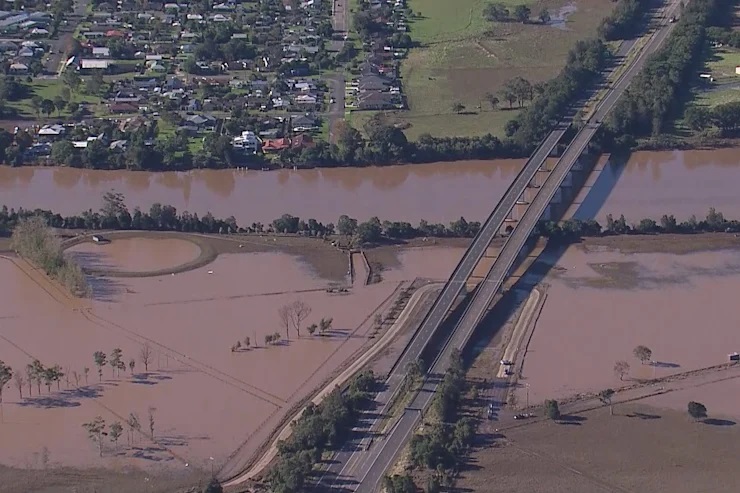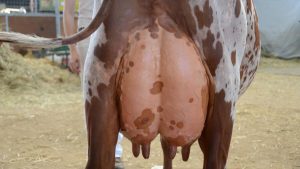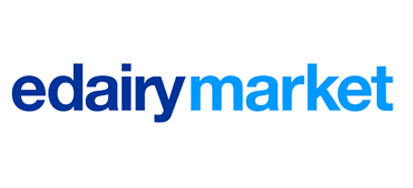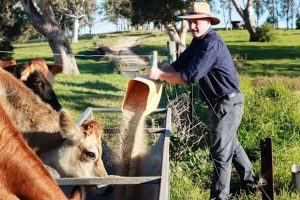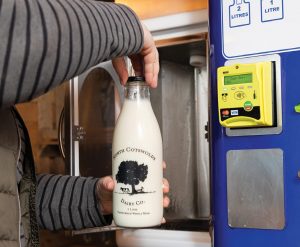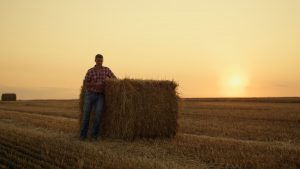
Australians have been told to brace for dairy shortages and higher milk, butter and cheese prices as four in five milk-producing farmers across the nation are estimated to be struggling to recover from a natural disaster of some kind.
Consumers have no choice but to face rising prices for dairy products in the short and long term, said the chiefs of EastAUSMilk and Norco.
“I think the whole eastern seaboard is going to feel the shortage of milk and dairy products one way or the other,” EastAUSMilk president Joe Bradley said. “There’s no ifs or buts [about it]; it’s a disaster. Prices have to rise.”
The latest NSW floods have exacerbated the struggles of dairy farmers around the country, who had already been grappling with feed, hay or water shortages, severe droughts across Victoria, South Australia and Tasmania, or who were still recovering from Cyclone Alfred.
Farmers in these states have been buying high volumes of feed and hay as they struggled with once-in-a-century drought and the driest 14 months on record. The Bureau of Meteorology has reported “severe deficiency” of rainfall. The Victorian Farmers Federation has called for more short-term and long-term funding to prepare farmers for the next drought.
Australia’s national milk production, which has been dwindling over decades, will shrink even further. Many farmers told Bradley they would exit the dairy industry after NSW’s most recent catastrophic floods.
“You’ve had whole farms washed away, cattle washed away. You’ve had houses inundated. The whole business is gone,” Bradley said.
He accused the NSW government of letting bureaucracy get in the way of calling a “Category D” disaster, which would help farmers to get swift access to extra recovery support.
NSW Agriculture Minister Tara Moriarty has urged farmers to complete a damage assessment survey that will help determine where assistance or resources are needed.
But Bradley said the scale of the disaster was “plain as day”, counting about 140 dairy farms affected by the Mid North Coast floods, 35 of which were severely affected.
‘Milk, cheese, butter, ice cream, yoghurt, all the dairy products will have a level of inflation over the next three to six months.’Michael Hampson, Norco chief
“The thing that hurts the most is everyone goes up there and says, ‘we’ll help’,” he said. “You don’t need someone to fill out a form. Declare it as a disaster. Don’t stuff around.
“We’re talking about milk on your shelves, dairy products. We’re talking about essential services.
“It beggars belief, to be honest with you.”
Michael Hampson, chief of Australia’s oldest farmer-owned dairy co-operative, Norco, said farms would be crippled by costs of millions of dollars. He echoed calls to establish a Category D disaster.

A sheep and beef farm in Winslow, Victoria. Parts of western Victoria, inland NSW and South Australia are in record-breaking drought.Credit:Joanne O’Keefe
“If our country wants to drink fresh milk from farmers, it needs to support them through these significant natural disasters,” said Hampson.
“Milk, cheese, butter, ice cream, yoghurt, all the dairy products will have a level of inflation over the next three to six months.”
Flood-affected farmers will be grappling with costs that will run into the millions, Hampson said, adding farmers’ emotional and mental health would worsen if Category D was not called.
“They might have lost half a million dollars’ worth of feed and pastures, [and] they are going to lose over the next six to 12 months well and truly a million dollars’ worth of income,” he said.
“I don’t know why we need to go through this bureaucratic process. All that’s doing is causing significant mental health harm to farmers.”
Moriarty has been contacted for comment.
Dairy prices are also affected by fluctuations in global commodity prices. Butter is one grocery staple that consumers could be paying more for at the checkout, said Rabobank senior dairy and consumer foods analyst Michael Harvey.
“The butter price in the global market is at record highs again,” he said.

Norco CEO Michael Hampson has urged Australians to buy Australian-made and Australian-owned produce to support local farmers.
Any shortages in the domestic market would lead to higher imports from the global market, but that meant greater exposure to global prices, he said. Australia has been importing increasing amounts of butter from New Zealand.
“If [the global butter price] stays elevated, which is what we’re expecting, that’ll be the category that stands out the most.”
Milk processors are also advising on farmgate milk prices for the coming financial year, which are slated to be higher than the current financial year’s. Those new prices will begin from July 1.
But retailers such as Coles and Woolworths, competing fiercely on prices, are likely to push back on price rises, putting pressure on manufacturers and processors to absorb the increases.
“There will be pressure right along the supply chain. Most of that is likely to be experienced on the manufacturing side,” said Dairy Australia analysis and insights manager Eliza Redfern.
You can now read the most important #news on #eDairyNews #Whatsapp channels!!!
🇺🇸 eDairy News INGLÊS: https://whatsapp.com/channel/0029VaKsjzGDTkJyIN6hcP1K
